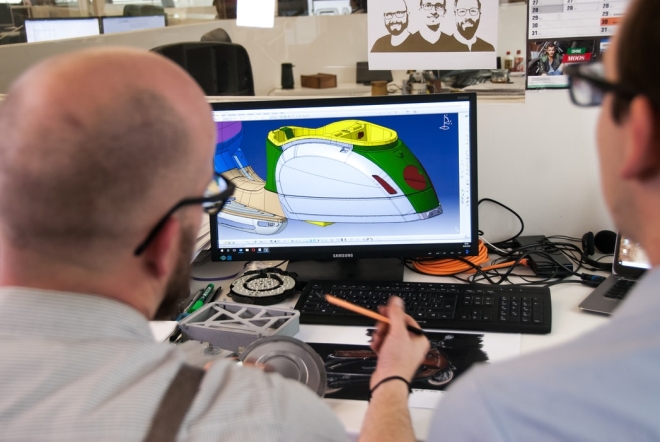In the time of economic crisis caused by the COVID-19 pandemic, launching a successful startup is even harder. However, the market has outstanding examples of companies that are going to revolutionize many industries and many of them are startups. For several of them, building a minimum viable product became a crucial factor in succeeding and gaining profit. In this article, we are going to talk about the benefits of MVP for startups. An MVP is a product or service that includes only essential functionality to meet the target audience’s needs. It gives them insight into the concept and features of a final version of a product. Building MVP for startups helps receive valuable user feedback and tailor the software according to specific user preferences and requirements. it helps forecast future behavior and income, predict user experience and determine possible pitfalls.
“The concept of MVP is to create a simple yet complete product that will interest customers. It is used to monitor customer behavior to build further development strategies. MVP is a cheap and effective way to comprehensively assess market demand.” — Andrey Onopriyenko, Chief Technology Officer at KeyUA.
So let’s have a closer look at how MVP helps a startup become profitable and successful.
Validate your product

No matter how thoroughly you researched the market and user needs before the launch, the outcomes of your software interaction with real users will always be surprising and unpredictable. Be ready for this and keep in mind that flexibility and adjustability are the key things to get user recognition and boost your income. Building a software startup has always been a risk for businesses and according to recent economic events, the situation is not going to change. Statistics reveal that 70% of tech startups fail, making most businesses nervous and more concerned about software development. The key reason for such fails is that there is no market need. It sounds surprising as most companies investigate the market and adapt to it. However, situations and tendencies change so rapidly that delivering a product to market should be as fast as possible.
The input of your customers should be a priority when you build a minimum viable product for startups. Find out if your product solves a critical problem and is really necessary for users. It won’t work out if it is just nice-to-have software, and you will need to keep improving. Creating an MVP gives you time to spare to change the features or add new ones. It means you can present the ready software in the market faster and get ahead of the competition. Another important aspect is that users give you an objective and impartial opinion about the product idea. You may think that everything is going perfectly, but it doesn’t mean that the actual users will agree with you.
Not only saving money

When it comes to building and testing a minimum viable product for a startup, optimizing costs is a crucial factor. However, this is not the key goal in most cases; rather, establishing solid relationships with early customers, keeping them engaged and excited about your application or website, showing them your progress is the central point of this development stage. Keep in mind that the users should know that this is not the end product but a launching pad to the final one. They will be glad to know that their contribution is valuable and can influence your software’s final version. The users will be looking forward to the results of the next iteration and understand the product from its very beginning.
Be cautious

There is no universal standard for an MVP, so many development teams interpret it in different ways. Some think it is a basic prototype, while others try to add most features to present the customers with a complete experience. And here, you need to be attentive because the more functionality you add, the more costs and time you spend on creating an MVP. Sometimes it ends with creating a market-ready product, and getting primary feedback from target users makes no sense. Make sure you don’t overdo the MVP development and clarify all the processes related to it beforehand. Before you start cooperating with a development company, you need to ensure they understand this concept development the same way as you do. Discuss this development aspect and set some limitations such as features, budget, release deadlines, type of MVP, ways of measuring customer feedback, etc. The process needs a detailed plan and definition of requirements.
Consider that an MVP is a unique product, and it should be customized to your software. Simply copying the approach of another company won’t result in a huge success. You can take into account the experience of others and get inspired by them. But still, the most significant work should be done by yourself according to your unique aims and requirements. You should tailor this product to the particular needs and requirements of your audience, market, and industry.
This is not the end

Keep in mind that your MVP is not the end product of your development. It is only a primary version that includes the essential functions. And if it works perfectly for target customers, it’s no time for the developer team to relax. This development stage helps you predict the final vision, but you still need to build, launch and test it successfully. So, make all the necessary conclusions, add the necessary improvements, and keep going to your final product.
To Wrap Up
Long story short, we can’t say that building and releasing an MVP will save your startup from all the troubles and challenges. This process is quite demanding and both businesses and developer teams need to dedicate much attention to an MVP. Nevertheless, it can save lots of time and a great deal of money for development. It is an extremely helpful stage to boost the development speed and present a high-quality product in the market that doesn’t require much effort to maintain.
 Imagup General Magazine 2024
Imagup General Magazine 2024



